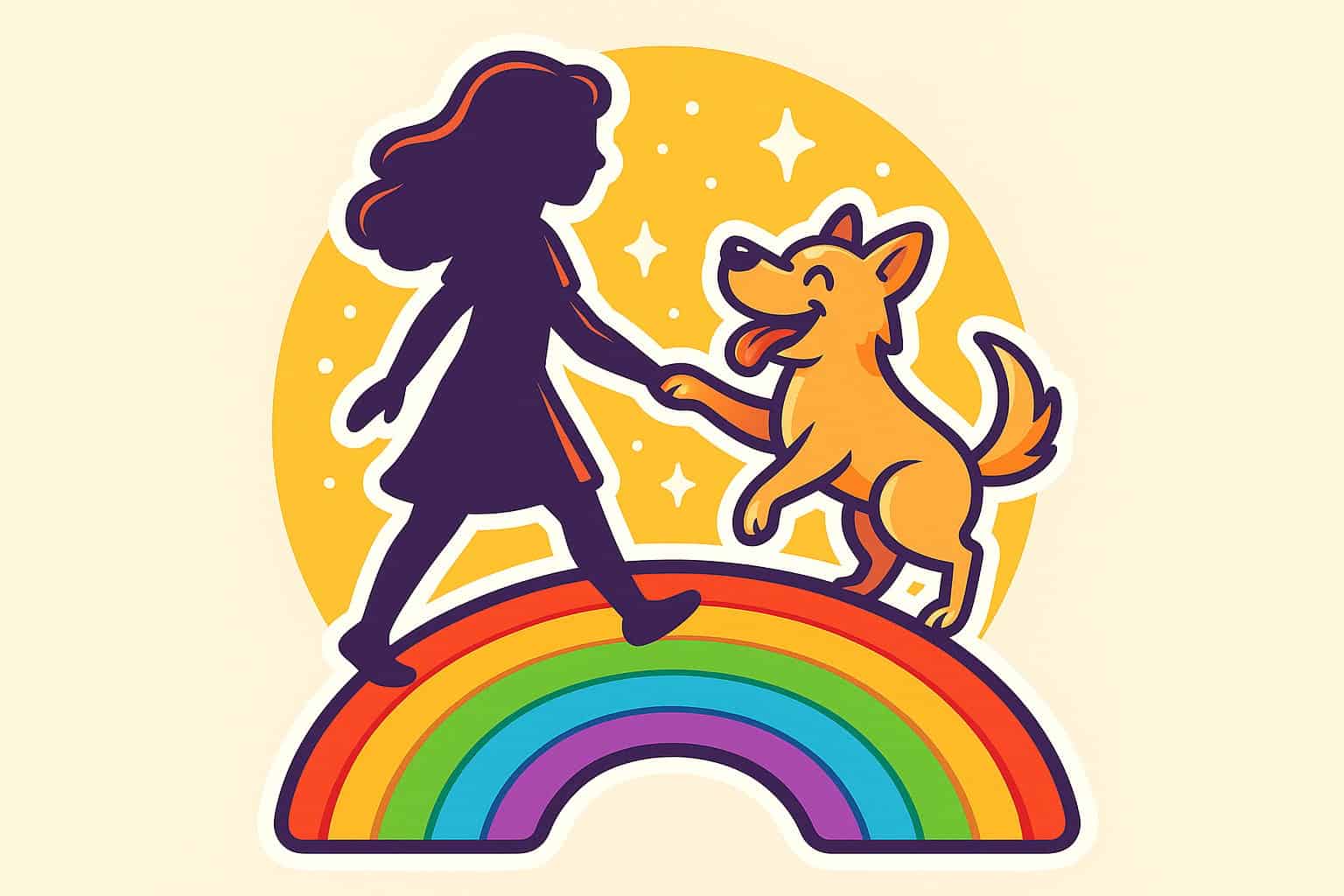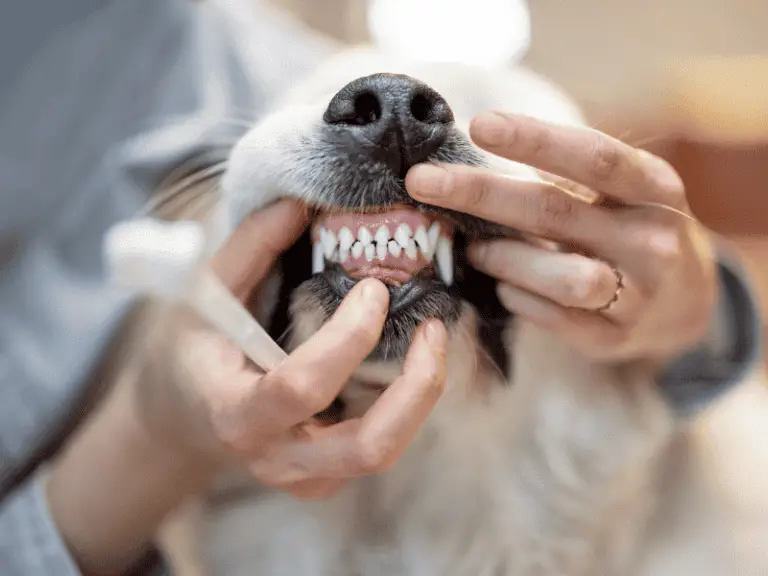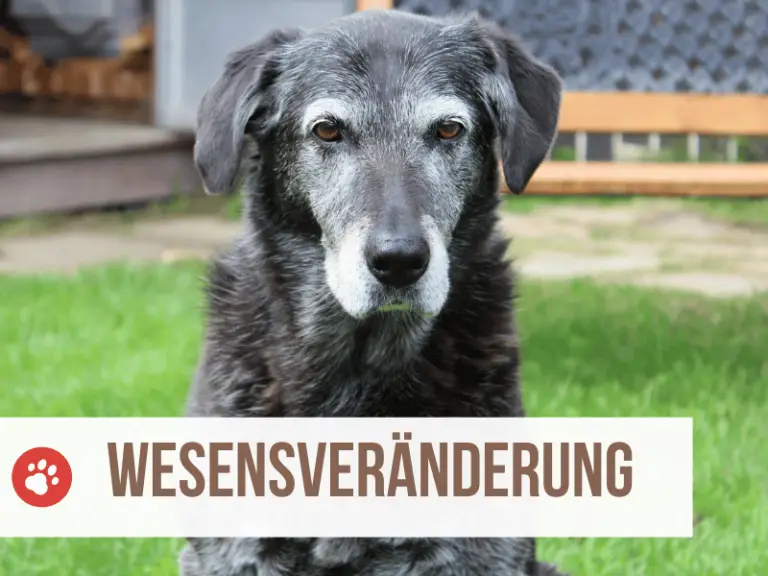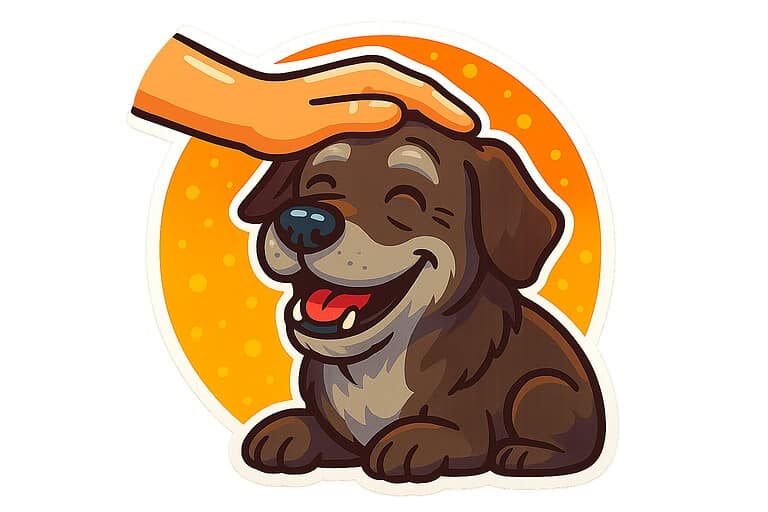Learning to Let Go: When Your Dog Can’t Go On but You’re Not Ready Yet

Watching your senior dog struggle with daily activities while you wish for more time together is one of the most heartbreaking conflicts a pet owner faces. Your dog’s body might be telling you it’s time, but your heart just can’t let go.
This emotional tug-of-war leaves many dog parents feeling lost and unsure about what to do. Guilt creeps in, and making the right choice feels impossible.
The hardest part about loving an aging dog is realizing when holding on becomes more about your needs than theirs. Maybe you notice your furry friend losing control of basic functions or struggling to walk. The thought of life without them is just too much to imagine.
Making this decision means having honest talks with your vet and understanding what your dog is really going through. You also need to find ways to support yourself and your family during this tough time.
You’ll have to face your own emotional roadblocks. Preparing for a peaceful goodbye that honors the life you’ve shared isn’t easy, but it matters.
Recognizing When It’s Time for Your Senior Dog
Knowing when your dog is ready to say goodbye is probably the hardest decision you’ll ever make as a pet owner. Focus on your dog’s quality of life, their pain levels, and how age-related conditions affect their daily happiness.
Understanding the Signs of Declining Quality of Life
You can’t measure quality of life with a blood test. It’s about whether your dog still enjoys the simple things that once made them happy.
Does your dog still greet you at the door? Maybe they used to run to you, but now they barely lift their head.
Watch for these changes:
- Eating habits: Skipping meals or ignoring treats
- Social interaction: Hiding or avoiding family members
- Sleep patterns: Restless nights or sleeping all day
- Bathroom habits: More accidents or trouble going outside
Your dog’s favorite activities say a lot. If they used to love walks but now refuse to go, that’s important. The same goes for ignoring toys they once adored.
Think about their good days and bad days. Are the bad ones piling up? When the bad days start to win, your dog might be telling you something.
How to Spot Chronic Pain and Discomfort
Dogs hide pain well, but chronic discomfort sneaks in through little changes.
Physical signs of pain:
| Sign | What to Watch For |
|---|---|
| Breathing | Panting when not hot or after exercise |
| Movement | Stiffness, limping, or not wanting stairs |
| Posture | Hunched back, head low, tense muscles |
| Facial expression | Squinting or furrowed brow |
Behavior shifts too. Maybe your dog snaps when touched in certain spots, even if they’ve always been gentle. Some dogs cling to you, others pull away.
Vocal changes count. You might hear more whining, whimpering, or maybe your usually chatty dog goes quiet.
Sleep gets tricky. If your dog can’t get comfy at night or keeps shifting around, pain might be the reason.
Common Age-Related Conditions in Old Dogs
Several conditions hit senior dogs and can really mess with their comfort and mobility.
Arthritis is super common. Your dog might move slowly in the morning or struggle to stand up. Jumping onto furniture becomes impossible.
Cognitive decline shows up as confusion or getting lost in familiar places. Some dogs forget house training or don’t recognize family. Anxiety or odd habits like pacing can pop up.
Heart and lung issues lead to breathing problems and less stamina. Your dog might cough a lot, especially at night, or get tired fast.
Cancer gets more likely with age. Look for lumps, wounds that don’t heal, or sudden weight loss.
Kidney and liver disease sneak in slowly. Watch for more drinking and peeing, appetite loss, or vomiting.
The big question isn’t just if your dog has these issues, but if they can still enjoy life with them. Some dogs do well for a long time with good care, while others struggle even with treatment.
Emotional Roadblocks: Why Letting Go Feels Impossible
When your senior dog suffers but you can’t picture life without them, you face some of the hardest emotions ever. Guilt whispers that you’re giving up too soon, and fear of loneliness sits heavy in your chest.
Navigating Guilt and Self-Doubt as a Pet Parent
That nagging voice asking, „Am I doing this too early?“ is normal. You might think, „They had a good day yesterday, maybe they’re getting better.“
Common guilt thoughts:
- „I’m being selfish“
- „Maybe the vet is wrong“
- „I should try one more thing“
- „What if tomorrow is better?“
Choosing to end your dog’s suffering isn’t giving up. It’s the last loving thing you can do.
Try keeping a simple journal of your dog’s good and bad moments. Write down when they eat, play, or seem happy, and when they’re hurting or struggling.
This record helps you spot patterns. Maybe the good days are slipping away.
Self-doubt comes with deep love. But you know your dog better than anyone else.
Coping With Fear of Change and Loneliness
Your dog has been part of your routine for years. The idea of coming home to silence can feel crushing.
Maybe you worry about mornings without their greeting or eating alone. Walks feel different, and the quiet in the house is tough.
These fears are real. Grief often starts before your dog is even gone.
Plan ahead for the first few days. Ask a friend to check in, or stock up on comfort food. Take a little time off work if you can.
Some people make a memory box before their dog passes. Tuck in their favorite toy, collar, or blanket.
The empty space they leave means you loved them deeply. That love doesn’t vanish.
Dealing With Family Disagreements
Families often clash over timing. One person says „it’s time,“ another wants to wait.
Common conflicts:
- Kids wanting to try more treatments
- Partners seeing pain differently
- Relatives giving unwanted advice
- Money worries shaping decisions
Kids especially have a hard time. They might not get that sometimes love means letting go.
Try a family meeting. Let everyone talk without judgment. Focus on what’s best for your dog.
If you can’t agree, ask your vet to talk with everyone. Sometimes it helps to have an expert explain things.
You don’t need everyone’s approval. As the main caregiver, the decision is yours.
Having Honest Conversations With Your Veterinarian
Your vet needs to know your real worries about your dog’s life, and you need clear answers about what’s next. These talks help you figure out all your options, from comfort care to making that final call.
Questions to Ask About Euthanasia
Bringing up euthanasia feels awkward, but your vet has these talks all the time. They get how hard it is.
Start simple: „How will I know when it’s time?“ Your vet can tell you what signs to watch for, like stopping eating or not getting comfortable.
Ask about the process. What happens during euthanasia? Will your dog feel pain? Can you stay with them?
Questions to consider:
- Can we do this at home?
- How long does it take?
- What happens to my dog’s body after?
- Should our other pets be there?
Ask as many questions as you need. Your vet wants you to feel as peaceful as possible.
Some vets even walk you through the steps, showing where they’ll place the IV and explaining each part. It can help calm your nerves.
Learning About Palliative and Hospice Care
Maybe you’re not ready for euthanasia, but your dog needs more comfort. That’s where palliative care steps in.
Palliative care means managing pain and keeping your dog happy. Your vet might offer pain meds, anti-nausea drugs, or even acupuncture.
Hospice care is similar but usually means your dog has weeks or months left. The goal shifts from fighting disease to making each day count.
Common hospice options:
- Pain meds
- Appetite boosters
- Anxiety meds
- Special bedding
- Easier exercise routines
Your vet can help you set up a comfort plan. Think soft blankets, easy water access, and gentle massage.
Ask about warning signs that mean it’s time to rethink. Your vet will help you spot when comfort care isn’t enough.
Understanding Your Dog’s Prognosis
You need honest info about what’s ahead. Ask your vet to be direct about your dog’s timeline.
Will things get worse slowly or suddenly? Some diseases creep in, others hit fast.
Find out what good and bad days might look like. Your vet can explain which symptoms you can manage and which ones mean serious trouble.
Key questions:
- How much time do we have?
- What will the next weeks look like?
- Which symptoms should worry me?
- When should I call for help?
Don’t accept vague answers. Push for as much detail as you can handle.
If you get overwhelmed, bring a friend or family member to the appointment. They can help take notes and ask questions.
Prognosis isn’t a crystal ball. Your dog might surprise everyone. But knowing what to expect helps you make better choices.
Preparing for the Goodbye: Gentle Decisions for a Peaceful Passing
The last moments with your dog should feel as peaceful as possible. Thoughtful choices about where, when, and who joins you can make this goodbye a loving one.
How to Decide Where and When
Your dog feels safest at home. Many vets offer in-home euthanasia, letting your pet pass in their favorite spot by the window or on the couch.
At-home perks:
- No stressful car ride
- Familiar sights and smells
- Favorite blanket or toy close by
- Privacy for your family
If you go to the clinic, ask for a quiet room away from the crowd. Some places have special comfort rooms for these moments.
Pick a time when you won’t feel rushed. Maybe a weekend morning when things are calm, or an afternoon when your dog usually naps.
Think about your dog’s routine. If they’re happiest in the morning, that might be best. Some dogs settle more easily in the evening.
Creating Comfort for Your Senior Dog
Your dog needs to feel safe and loved at the end. Gather up their favorite things – that old squeaky toy or the blanket they always sleep on.
Comfort tips:
- Soft bedding or their favorite spot
- Cozy room temperature
- Gentle lighting (skip the harsh lights)
- Favorite treats if they want them
Talk to your dog in your usual, gentle voice. They know your sound and it helps. Keep calling them by those sweet nicknames.
Touch matters. Gentle petting or just resting your hand on them brings comfort. If your dog loves snuggles, hold them close.
Some dogs relax with soft music. Others just want the normal sounds of home, like birds outside or the hum of the fridge.
Who Should Be There and Why It Matters
Think carefully about who should be present during your dog’s final moments. Your dog will pick up on everyone’s emotions, so choose people who can stay fairly calm.
Consider including:
- Family members your dog loves most
- Children old enough to understand (usually 8+)
- Your other pets, especially bonded companions
Very young kids or highly emotional relatives might do better saying goodbye beforehand. Honestly, there’s no shame in stepping out if it gets too hard—your dog won’t judge you for it.
If you have other dogs, they often benefit from being present. Dogs sense death in their own way, and witnessing a companion’s peaceful passing can help them avoid confusion later.
Your other dog might sniff or lie down next to their friend. That’s completely normal.
Some people prefer to be alone with their dog for this moment. Others gather the whole family. There’s no single right choice—just what feels right for you and your dog.
Your vet will guide you through each step and give you as much time as you need. They’ve helped many families through this and understand the love you have for your companion.
Supporting Children and Other Pets During Loss
When your senior dog passes away, the grief ripples through your entire household. Kids need honest conversations about death, while your other pets may show their own signs of mourning or confusion.
Explaining the Loss to Kids in Simple Terms
Children often form deep bonds with the family dog. Your dog might have been their confidant, playmate, and comfort during tough times.
When you talk to kids about death, honesty works better than sugar-coating. Use clear words like „died“ instead of „went to sleep“ or „went away.“ Those phrases can just confuse or scare them.
Age-appropriate approaches:
- Ages 3-5: „Buddy’s body stopped working and he died. He can’t come back.“
- Ages 6-10: Explain that death happens when bodies become too sick or old
- Ages 11+: Allow deeper talks about the life cycle and memories
Let your child ask questions, even if they ask the same thing over and over. Maybe they’ll ask „Where is Max?“ dozens of times. That’s normal processing.
Create a ritual together, like planting a flower in your dog’s favorite sunny spot or making a photo album. These activities help kids understand that love continues, even after death.
Don’t rush to get a new puppy. Your child needs time to grieve their special friend first.
Helping Other Pets Adjust to the Change
Have you noticed your other dog searching for their missing companion? Dogs absolutely grieve, and the signs might surprise you.
Your remaining pets may seem confused, lose their appetite, or change their sleep patterns. Some dogs get extra clingy, while others pull away.
Signs your pet is grieving:
- Whining or howling more than usual
- Looking for their companion in favorite spots
- Changes in eating habits
- Sleeping in the deceased dog’s bed
- Less interest in walks or play
Give your surviving pets extra attention and try to keep their routine as normal as possible. If your dogs always ate together, keep feeding at the same times and spots.
Try not to rush into bringing home a new dog. Your grieving pet needs time to adjust. Take them to dog parks or arrange playdates to see if they’re ready for a new friend.
Most pets adjust within a few weeks, but some need months. Let them set the pace for healing.
Caring for Yourself During and After Loss
Losing your senior dog hits hard, and taking care of your emotional needs matters just as much as any medical decision you made. Grief can really surprise you with its intensity.
Navigating Grief in Healthy Ways
Your grief is real and valid. Many pet owners feel shocked by how deep the pain goes after losing a dog.
The loss of your senior companion often hurts more than losing human family members. Your dog was part of your daily routine for years.
Give yourself permission to grieve fully. Don’t let anyone dismiss your pain with „it was just a dog.“ Your bond was real and special.
Try these healthy ways to process your feelings:
• Keep a journal—Write letters to your dog or jot down favorite memories
• Create a photo album—Looking at happy pictures can bring comfort
• Take walks in places you enjoyed together
• Allow yourself to cry when you need to
Avoid getting another dog too soon. You need time to heal first. Maybe you’re actually enjoying the quiet, or your life situation has changed.
Sleep and eat regularly even when you don’t feel like it. Grief affects your body, too.
Finding Support From Friends and Pet Communities
You don’t have to grieve alone. The right support makes healing easier and less lonely.
Start with close friends and family who knew your dog. They get it, and can share memories with you.
Look for local pet loss support groups. Many veterinary clinics and animal hospitals offer these. Other pet owners know what you’re going through.
Online communities offer support around the clock. Search for pet loss forums or Facebook groups where you can share stories.
Consider talking to a counselor who understands pet loss. Some therapists specialize in helping people through animal grief.
Ask your vet’s office about support resources. They see grieving pet owners every day and often have good recommendations.
Don’t isolate yourself completely. Even if you don’t feel social, try to keep up with some normal activities and stay connected to supportive people.
Honoring Your Dog’s Memory and Moving Forward
Creating tributes helps you process your grief while celebrating the joy your dog brought to your life. Simple acts of remembrance can transform pain into something meaningful.
Creative Ways to Celebrate Your Dog’s Life
A memory box becomes your private sanctuary. Fill it with your dog’s collar, favorite toys, and photos that make you smile.
Maybe you saved their tennis ball or that squeaky toy they carried everywhere? Those little things hold so many memories.
Try making a photo book or scrapbook. Add pictures from puppyhood to their senior years. Jot down stories about funny moments or routines you shared.
Memorial jewelry offers a way to keep them close. Some folks use a dog tag as a pendant. Others use a preserved tooth or even incorporate ashes into glass pendants.
Plant a tree or flowers in your yard. Pick something that blooms during their birthday month. Every spring, you’ll see new life growing in their honor.
Create a donation fund at your local animal shelter. Ask friends to contribute instead of sending flowers. This helps other dogs while honoring yours.
Finding Purpose After Loss
Your pain can turn into purpose when you help other dogs in need. If you feel up to it, volunteering at shelters lets you channel your love into action.
There’s no need to adopt right away. Walking dogs or helping with feeding gives you time with animals while you process your loss.
Maybe try fostering senior dogs who need gentle homes. If you’ve cared for an aging dog, you have a gift for helping others.
Some folks advocate for senior dog adoption. You could share your story on social media or write about the joys of loving an older dog.
Memorial donations don’t have to be a one-time thing. Set up automatic monthly gifts to dog rescue groups and keep your tribute going.
If you want, start a support group for pet owners facing tough choices. Your experience could help others navigate end-of-life care with more compassion.






